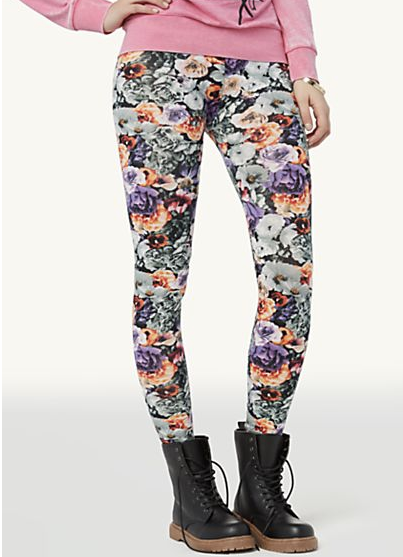Middle-school girls in Evanston, Ill., are picketing for the right to wear leggings. Sophie Hasty, 13, told the Evanston Review that teachers at Haven Middle School informed female students this month that leggings are “too distracting to boys” to be fit for the classroom. Hasty, along with 500 students who’ve signed a petition contesting the rule, counter that the only thing leggings are responsible for is the supreme comfort of those who wear them. Last week, student protesters reported to class clad in leggings or yoga pants, holding signs like, “Are my pants lowering your test scores?”
The girls’ cause is about much more than the right to bear L’eggs. By emphasizing the disruptive consequences of leggings, administrators are attempting to fix boys’ juvenile behavior by placing an unfair burden on the girls who are supposedly distracting them. (As Hasty put it: “Not being able to wear leggings because it’s ‘too distracting for boys’ is giving us the impression we should be guilty for what guys do.”) The result is that the school is actually preventing these girls from focusing on their schoolwork by asking them to pay more attention to their own bodies.
School administrators have told parents that “if leggings are worn, a shirt, shorts, or skirt worn over them must be fingertip length,” but some girls say they’re being told they’re not allowed to wear leggings at all. And according to Juliet Bond, a parent of a student at Haven, the “students who were getting ‘dress-coded,’ or disciplined for their attire, tended to be girls who were more developed.”* That “inconsistent enforcement simply makes girls embarrassed,” she says. Lucy Shapiro, a 12-year-old seventh grader at the school, backed up this claim, telling the Evanston Review that “when both she and a friend were wearing the same type of athletic shorts … a teacher came up and ‘dress-coded’ her, but not her friend” because, she was told, “I had a different body type than my friend.” Added Shapiro: “With all the social expectations of being a girl, it’s already hard enough to pick an outfit without adding in the dress code factor.”
Are leggings a human right? In 1969, the Supreme Court decided that while schools can’t ban students from wearing political messages on their sleeves—like black armbands donned to protest the Vietnam War—that ban didn’t extend to a school’s “regulation of the length of skirts or the type of clothing” worn by students. Schools can still impose dress codes on items that would reasonably “cause substantial disruption or material interference with school activities.” But there’s a fine line between deeming a type of clothing as distracting, and declaring a body itself to be disruptive. And if boys are really spending too much time staring at leggings (or legs) instead of at the chalkboard, then that’s a behavior that boys should learn to regulate before they’re accused of sexual harassment once they graduate to the workforce.
According to school and district administrators, the dress code will be rehashed at a meeting later this month “in an effort to ensure consistency in terms of guidelines and enforcement across schools.” I hope they’ll listen to the arguments of leggings activists like Hasty. If the school seeks to uphold the rule, they should really have to answer the protestors’ question: Has any boy actually been academically impacted by the way his classmate covers her legs?
* Correction, March 27, 2013: This post originally misstated Juliet Bond’s first name.
